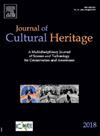一种利用Levenshtein距离和反馈回路进行历史文物组装的新方法
IF 3.3
2区 综合性期刊
0 ARCHAEOLOGY
引用次数: 0
摘要
破碎的博物馆文物往往是不完整的,缺乏鲜明的视觉特征,无法清晰识别。这使得研究人员很难更深入地了解过去。本文提出了一种新颖的方法,skull - mont,用于将破碎的二维元素的轮廓转换成抽象的单词进行重组。该方法利用语言度量来搜索词片段匹配,并利用反馈循环机制将自动搜索与专家领域知识相结合。本文以撒马尔罕非洲博物馆破损浮雕的整理为例进行了探讨。实验中使用的反馈回路机制允许仅根据有关元素轮廓的信息自动确定解决方案。专家可以验证可能的解决方案,例如,通过评估单个浮雕碎片纹理的连续性。根据后续迭代的结果,确定了可以扩大和合并的元素簇。最终得到了破碎地形的完整表征。结果证实了该方法在安排碎片化二维实体方面的有效性,以及它在自动寻找可行的组装组件方法方面的潜力。文章中描述的带有反馈回路的方法可以被认为是一种有价值的工具,可以帮助博物馆员工和考古学家努力组装碎片化的历史文物。本文章由计算机程序翻译,如有差异,请以英文原文为准。
A novel approach for assemblage of historical artefacts using the Levenshtein distance and feedback loop
Broken museum artefacts are often incomplete and lack distinctive visual features that allow for clear identification. This makes it difficult for researchers to gain a more in-depth understanding of the past.
The article presents an original method, Skul-Mont, for reassembling broken two-dimensional elements with the conversion of their contours into abstract words. The method utilizes linguistic measures to search for word fragments matching, and utilizes a feedback loop mechanism to combine automated search with expert domain knowledge. The article discusses an example of arranging a broken relief from the Afriasyab Museum of Samarkand.
The feedback loop mechanism used in the experiment allows automatic solution determination based on only information about the contours of the elements. Experts can verify possible solutions, for example, by evaluating the continuity of the texture of individual fragments of the relief. Clusters of elements were identified that could be enlarged and amalgamated, based on the outcomes of subsequent iterations. Ultimately, a complete representation of the broken relief was obtained. The results confirm the efficacy of the methodology in arranging fragmented 2D entities and its potential to automate the search for feasible methods of assembling components. The method described in the article with a feedback loop can be considered as a valuable tool to aid museum employees and archaeologists in their efforts to assemble fragmented historical artefacts.
求助全文
通过发布文献求助,成功后即可免费获取论文全文。
去求助
来源期刊

Journal of Cultural Heritage
综合性期刊-材料科学:综合
CiteScore
6.80
自引率
9.70%
发文量
166
审稿时长
52 days
期刊介绍:
The Journal of Cultural Heritage publishes original papers which comprise previously unpublished data and present innovative methods concerning all aspects of science and technology of cultural heritage as well as interpretation and theoretical issues related to preservation.
 求助内容:
求助内容: 应助结果提醒方式:
应助结果提醒方式:


